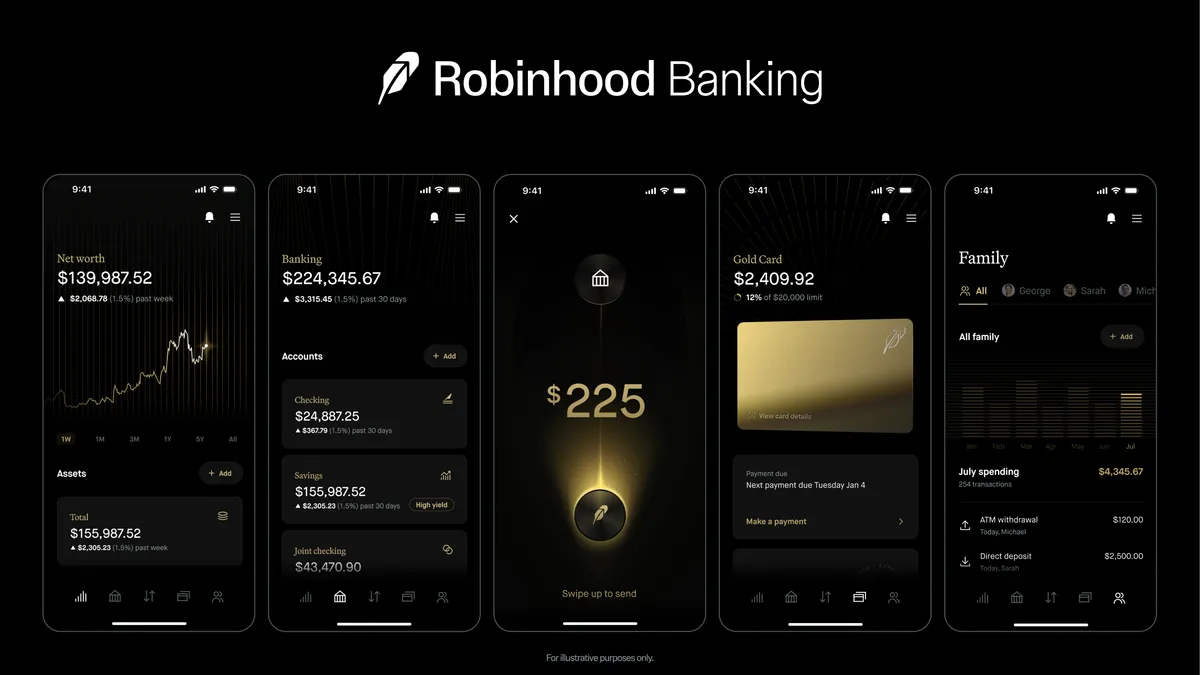Banks may be eager to take advantage of opportunities posed by artificial intelligence, but they have work to do in persuading their customers to get onboard.
As they weave AI into their operations, seeking to make customer-facing and in-house functions more efficient, banks “really need to amp up their transparency and the education that they're providing customers,” said Ila Ghosh, senior director of financial services intelligence at J.D. Power.
Less than 30% of consumers trust AI chatbots for financial information and advice, and less than half believe AI will improve their personal finances, according to a J.D. Power report released this month.
Personalized alerts and recommendations hold some appeal to customers, “but many are wary of allowing AI to control the actions and the application of personal security measures,” J.D. Power said. The firm surveyed about 2,000 U.S. financial services customers on their AI use and opinions in April.
Roughly 54% of bank customers said they’ve used some form of genAI, and that’s more likely among big-bank customers than regional ones, J.D. Power said. Banking is predicted to be heavily affected by generative AI, and with the promise of efficiency gains, the industry has scrambled to explore uses to bolster efficiency and productivity.
Although a hot topic, AI remains somewhat of an enigma, at least to consumers, Ghosh noted. Only about one-third of customers have a solid grasp on how AI works, and many can’t tell when AI is being used, she said.
“The onus is on financial institutions to communicate to their customers a clear understanding of how AI works and its benefits,” J.D. Power said in the survey findings.
Ghosh was struck by consumers’ strong reservations around AI’s role in managing personal finances, despite its current integration into the financial services world through chatbots and fraud detection.
Bank customers expressed apprehension around data privacy and security, increased risk of fraud and loss of human support when AI is involved. These customer concerns aren’t unfounded when AI is evolving rapidly, Ghosh said.
There’s also unease about potential bias and fairness issues related to AI, particularly regarding lending decisions, said David Donovan, executive vice president of financial services for the Americas at consulting firm Publicis Sapient.
Room for optimism
Banks have started to leverage AI in substantial ways, including by offering customers tailored financial advice and quick assistance through chatbots and virtual assistants, Donovan said. As for banks’ own operations, AI is automating tasks such as fraud detection, payment processing and loan approvals, he said.
As interest in generative AI has increased, banks are pursuing its use to help software engineers develop code, or make virtual assistants smarter and more efficient. Publicis Sapient’s recent study polled 1,000 senior banking executives and discovered about one-third of banks’ customer experience investments are going toward AI, machine learning and genAI.
Customer perception of AI, however, “is a bit of a mixed bag at the moment,” Donovan said in an email.
Most consumers believe banks are using AI to prioritize their own interests over those of customers, Ghosh said.
Of customer-facing ways banks are tapping AI, consumers expressed the most interest in alerts that might offer them a tangible benefit: Close to two-thirds of bank customers are interested in trying AI-powered account alerts that would help them avoid service charges and fees.
Consumers were less enthusiastic, however, about using automated phone voice assistants to handle customer service issues (44%), or taking personalized product recommendations generated by AI (42%).
On the customer service front, customers are worried it’ll be harder to reach a human when they need to address complex issues.
“People want to talk to people. Machines can’t do everything,” Ghosh said.
In light of that, it’s not surprising that consumers want their banks to employ a significant level of human oversight when AI is used, she said.
Customers also want to be informed when AI is involved in their interactions with banks.
“Not every interaction may require disclosures, especially when it’s enhancing security or providing a seamless experience, but I think the customer perception is that they want to know if a bank is using AI,” Ghosh said.
Enhanced transparency
There’s a clear need for banks to be more transparent about their AI use and provide disclosures, particularly as AI becomes more ubiquitous in banking, analysts said. De-mystifying the technology, by explaining how their AI systems work and what their data protection practices are via demonstrations on their websites, can benefit their relationships with customers, Ghosh said.
“Customers deserve to know exactly how their data is being used, how these AI-powered decisions are being made, and what safeguards are in place,” Donovan said.
Banks should emphasize AI’s security benefits, whether that’s enhancing fraud detection or real-time transaction monitoring, and offer clear explanations on how AI processes data, he said.
Banks also need to give customers visibility into how AI decisions are made, Donovan said.
“This could include customer-facing dashboards showing the logic behind loan approvals or investment recommendations,” he said. “Banks should be leveraging every channel – like emails, pop-up notifications and dedicated web portals – to educate and inform their customers.”
Lenders should also ensure their customer service representatives are educated on the bank’s AI use, Ghosh said.
There could be a need for targeted AI education to reach demographics with a wary attitude toward AI, she said. College graduates and customers who are men or under 40 use AI to a greater degree and have a more optimistic outlook on the technology than do women or older consumers, J.D. Power found.
Building customer confidence in AI's ability to handle complex financial matters is a “critical challenge” for banks, Ghosh said. But “anything that can help customers understand how the bank is using AI, why they’re using AI and really how it’s going to benefit the customer” can aid in efforts to alleviate customer fears and build trust, she added.
Banks may be enticed by short-term gains that AI can offer efficiency and personalization, but lenders have to take a long-term view, Donovan said.
“Banks have to double down on demonstrating the ethical, unbiased use of AI,” he said.
Partnering with independent third-party auditors to validate banks’ AI practices as beneficial could be a smart move, Donovan added.
“And proactively communicating their stance on fairness and transparency is key,” he said. “Customers want to feel in control, so giving them the ability to opt in or out of AI-driven services is crucial.”























